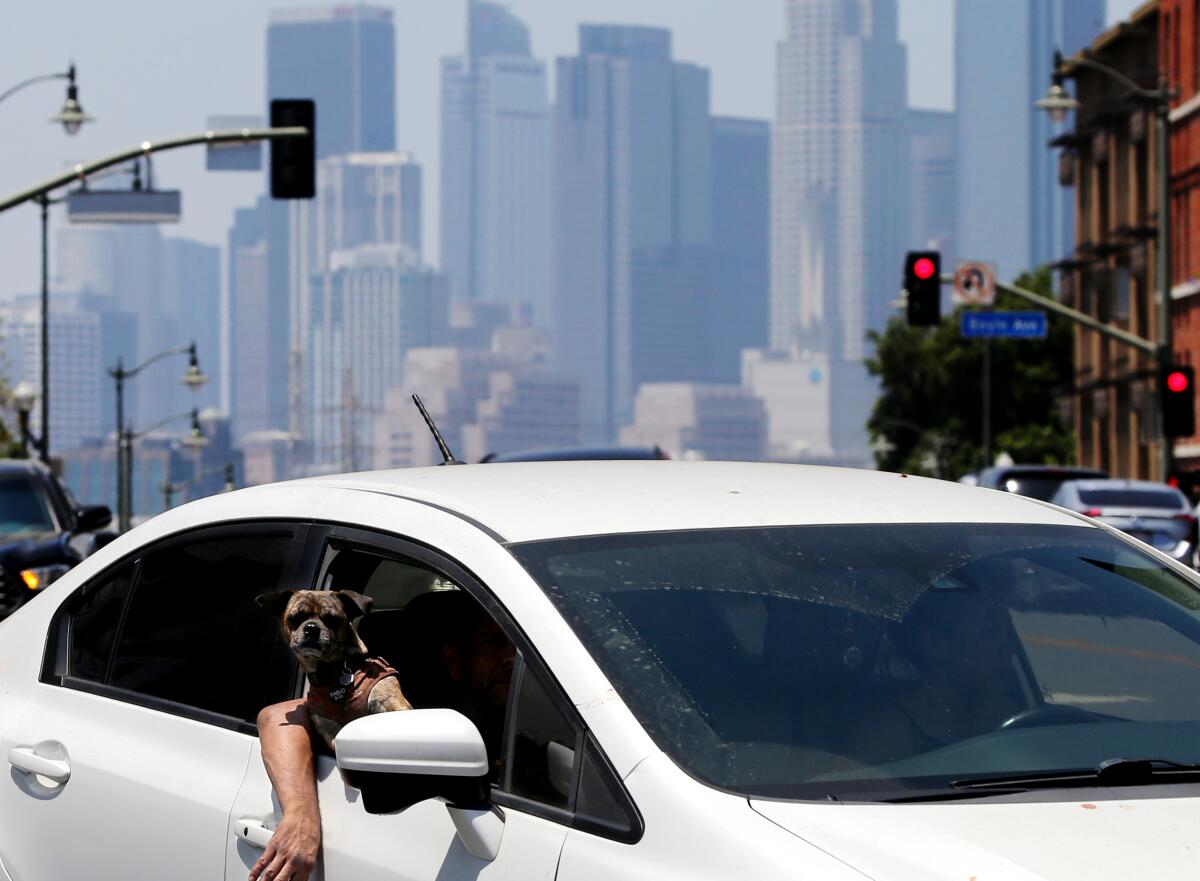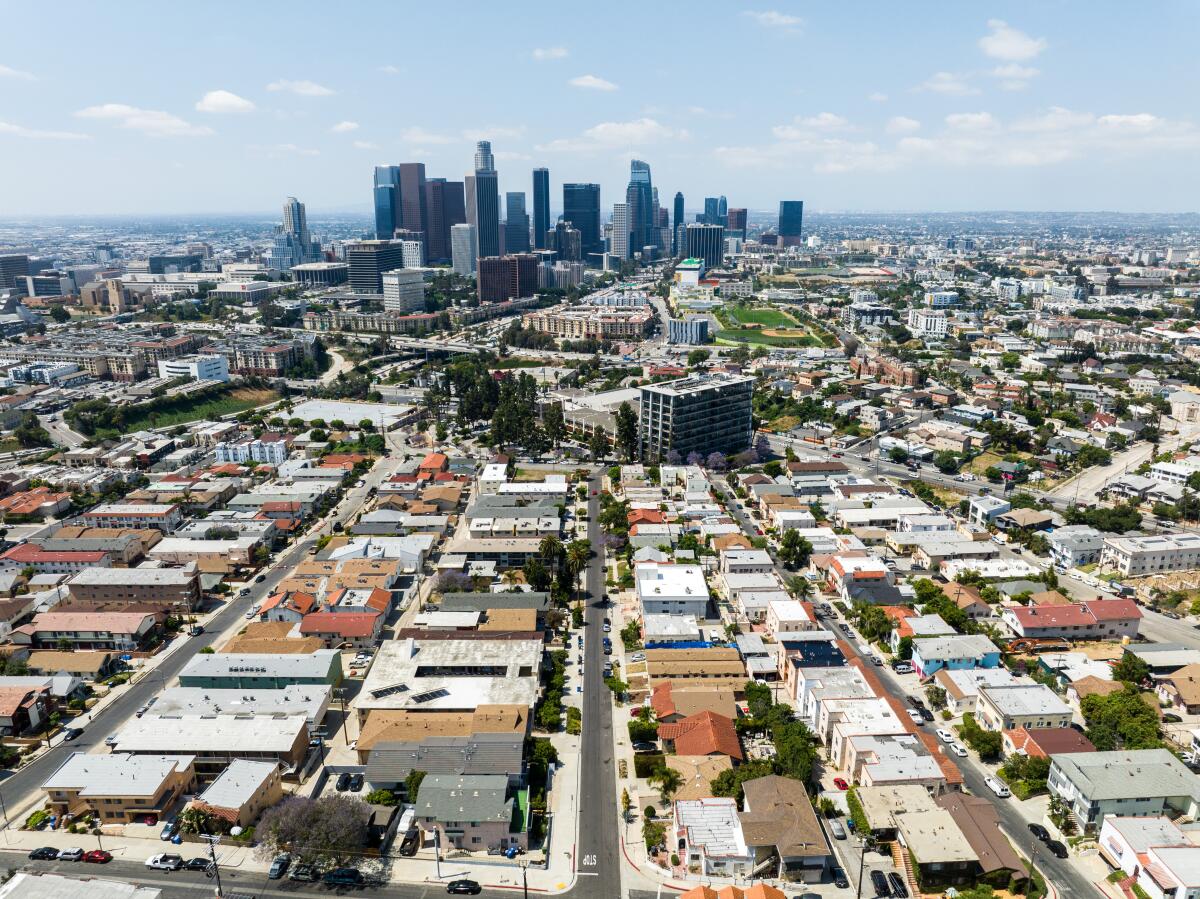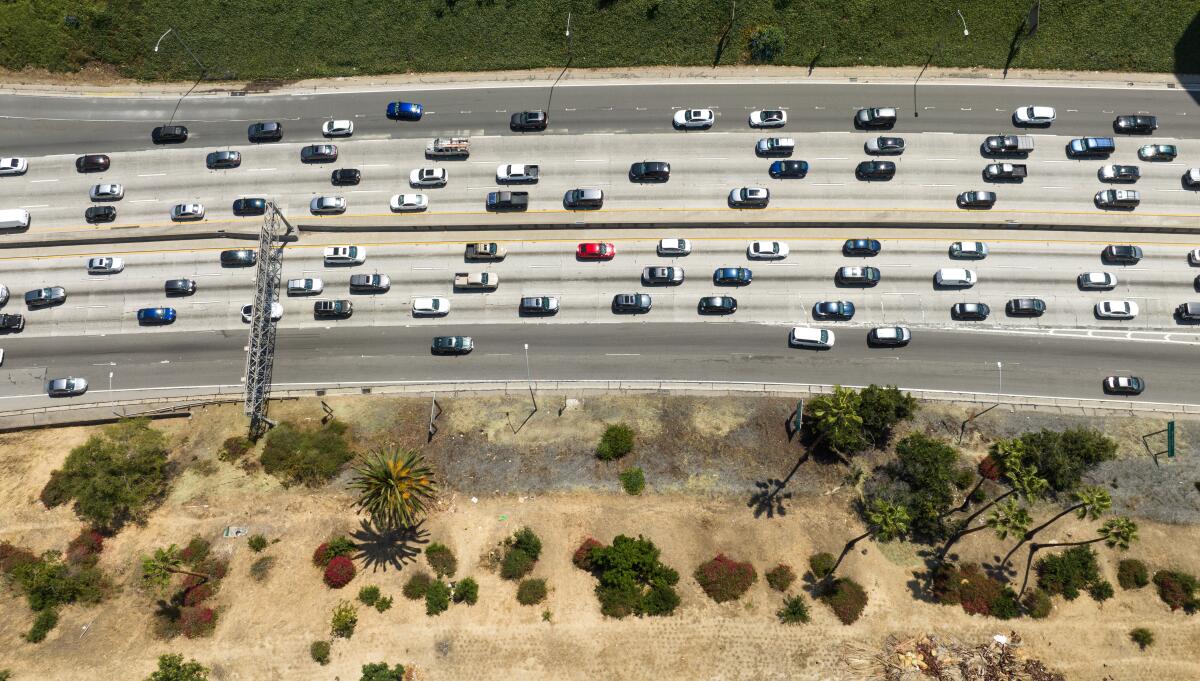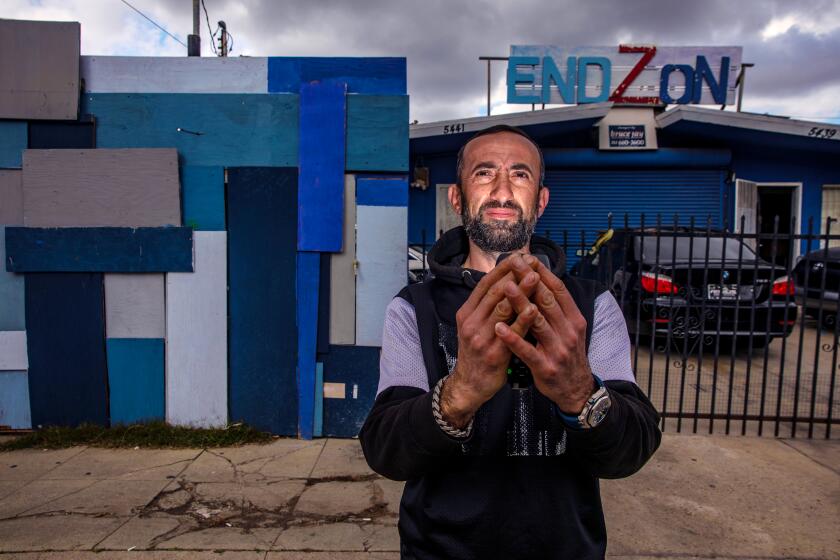Taoism and the thorny interpersonal politics of who drives where in Los Angeles

- Share via
Los Angeles is a hard place to make friends, and we all have our theories as to why.
About half of the city’s population is transplants, and people are always coming and going. About 10 million residents live in Los Angeles County’s 4,000 square miles, which feature a level of inaccessibility that perennially ranks among the nation’s worst — last year Angelenos lost 95 hours to traffic, on average, according to Inrix traffic rankings.
Then there’s that stubborn divide between the west side and east side, wherever you happen to draw the border between the two. Westsiders find the east side too stressful, and Eastsiders think they’re too hip to drive west. Basically, the traffic you know is always more palatable than the traffic you don’t. And the striving, superficial cultures found around excessively ambitious people certainly play a role.
But for me, there’s no bigger barrier than the thorny interpersonal politics of who drives where.
It may appear that you and your friend are having a simple conversation about where to meet. But behind the logistics is an unspoken battle that can be as furiously fought as any cold war, and similarly without end. Gird yourself, or prepare to drive to Pasadena during the evening rush hour, as I once did, to meet a date at a coffee shop steps from her front door.
It’s frustrating, because I find we are always settling for the compromises that make no one happy. Trying to maximize both convenience and enjoyment often causes one to subtract from the other. The places that happen to be perfectly equidistant between your home and your family or friend are rarely the places you’re actually interested in.

These tussles strain friendships, and I’ve struggled to make peace with that in the past. One of the biggest fights I’ve ever had with my friends is when I wanted to go to a Rosemead dim sum restaurant that was five miles farther than our regular place — a silly fight in retrospect, given how hard it is to find time to see each other now. Trying to make yourself happy at the expense of your friend’s happiness rarely works for long.
So my solution for the past two years has been to declare surrender at the outset. I will meet you in Silver Lake, downtown Los Angeles or Highland Park at the bar or restaurant which is most convenient to you and our party size, or that one place with a cute patio that’s good for kids or dogs.
My monthly dim sum ritual now includes free rides door to door in my Prius. Now that I have a lot of friends with partners, families or children, I understand my willingness to drive is only possible because I don’t have those responsibilities.
Martyring yourself to the drive has a few distinct benefits. When I arrive at gatherings, people thank me for coming out and ask me how my journey was, as if I am an important foreign dignitary making a historic appearance.
After a few trips from my apartment in Venice to Silver Lake and Highland Park, I had accumulated so much friendship guilt that I was able to trade it in for an entire day spent in my neighborhood, with an itinerary entirely of my choosing.
We sampled the latest in aspirational California brunch culture on the expanded patio at Gjusta. We browsed Tortoise General Store and imagined alternate futures in which we had earned enough money to afford more of its wares. One of us had never been to the Venice Boardwalk before, and another shared memories of her grandparents eating at Hide Sushi on Sawtelle. I found that joking around about the politics of driving made them less painful.
And I think it meant more that we had gone out of our way to hang out with each other. Oftentimes meeting people where they are is more interesting and worthwhile than meeting exactly in the middle.

And if you reject the tyranny of distance, you get to see a lot more of Los Angeles. I’ve been forced to take different paths and familiarize myself with new neighborhoods. I’ve discovered stories I never would have: artists in auto body shops, swap meets, Cambodian fried chicken chains, the Happy Foot Sad Foot sign.
An unlikely artist at a Hollywood body shop channels the Dutch painter Piet Mondrian with a functional mosaic that keeps the needles out of the driveway.
Living with traffic is a lot like living with depression. A long drive teems with small irritations that could explode into extended emotional episodes. There are quiet periods in which self-reflection is inescapable.
You become more aware of the things you can control, like the radio, and the things you can’t, like when someone speeds through the yellow light and cuts you off mid-left turn. It causes you to think more deeply about friendships, and build their foundations more strongly, so a few extra minutes on the freeway cannot shake them.
The life lessons that help with depression also apply to driving, I’ve found.
Shortly after revealing my depressive episodes to my father a few years ago, he handed me two books and told me all of life’s answers could be found within them: the “Tao Te Ching” and the “Analects of Confucius.”
I was amused by his suggestion and how heavily it leaned into Asian stereotypes, then chagrined, when I read the books and discovered some useful ideas within them. I found my driving philosophy can actually be summed up by a Taoist verse:
If the mountain does not move, move the road. If the road does not move, the person must move. If the person cannot move, then the mind moves. If the mind cannot move, the perception moves.
Its insights dovetailed with the more scientific perspectives I’ve found in therapy about the biological origins of emotions. My therapist would often talk about how persistent, unshakable feelings are the result of well-worn neural pathways and grooves.

Changing your feelings involves sending your neurons along new paths, consistently, over time, until your perception shifts. And sometimes when I drive, it feels like the city is my brain, and I am like a neuron trying to fire along a new pathway, looking for something new.
I’ve been concealing depression for most of my adult life. Now I have nothing to hide.
So I wonder: If we all paid more attention to the pathways we take through the city, would our communities be so segregated and isolated? Could we change our relationships with each other by embracing new paths? Could we enjoy ourselves more?
Tao has a lot of meanings, among them, the way, or path, or doctrine, the road. And Taoism teaches that happiness comes from placing your will in harmony with life’s larger pattern.
It’s a lot like navigating the 405 and 10 freeway interchange.
You can fight the traffic and arrive stressed, or you can try to find peace within the pattern.
More to Read
Sign up for Essential California
The most important California stories and recommendations in your inbox every morning.
You may occasionally receive promotional content from the Los Angeles Times.
















